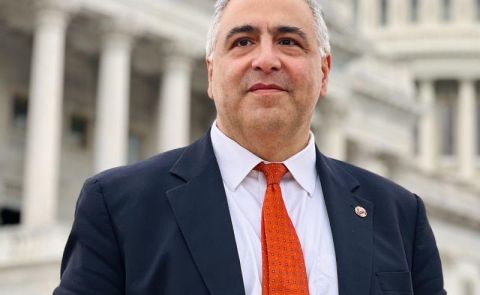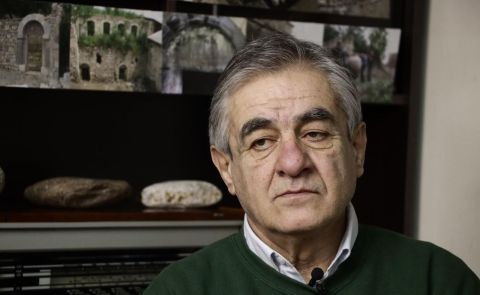
Ara Marjanyan: Armenian Nuclear Policy Will ‘Hedge,’ Not ‘Decouple’ from Russia

Armenia has relied on nuclear power generation since 1976 and it now accounts for at least a quarter of its energy mix. In line with its multi-vector foreign policy, Armenia wants to review its singular reliance on Russia as an energy partner for natural gas and nuclear power generation technology. While Rosatom is the lead contractor for the upgrade of the Metsamor nuclear power plant, other options are said to be under consideration.
Dr Ara Marjanyan is Armenia's national energy expert at the United Nations Development Programme. A power engineer by training, he heads the Armenian Energy Initiative, an NGO that supports policy development to strengthen efficiency, sustainability and energy security. Since nuclear energy was included in the EU's renewable green energy taxonomy, the discussion on Armenia's nuclear programme has become more strategic.
Ukraine started to explore its shift away from a Russian technology nuclear cycle in 2014. When did Armenia start, and in what political context?
Ukraine signed the so-called “123 Agreement” with the US back in May 1999 (named after Section 123 of the US Atomic Energy Act of 1954, titled "Cooperation With Other Nations"). It establishes norms and regulations for nuclear cooperation between the US and other nations, regulating the transfers of nuclear material or equipment from the United States. Besides, it facilitates collaboration in different areas, such as technical exchanges, scientific research, etc. On September 12, 2023, Westinghouse Electric Co. announced that it delivered its first reload batch of VVER-440 (Pressurized Water Reactor, PWR) nuclear fuel assemblies to Ukraine (Energoatom), produced in its facility in Sweden. The deal was signed in June 2022.
As far as I know, Armenia has never officially stated that it plans to switch to American nuclear fuel for its 440 MW PWR-type nuclear reactor (Unit #2 of the Armenian NPP is currently in operation). In a written comment to CivilNet in August 2022, a US State Department spokesperson said, “The U.S. Government does not share details of the negotiation process, but we can share that the State Department is giving Armenia’s request for a 123 Agreement the proper attention and due consideration.”
This was the first time it became known that Armenia requested a “123 Agreement” with the US. Former US Secretary of State Antony Blinken and Armenian Foreign Minister Ararat Mirzoyan also mentioned this agreement in comments given during the signature of the “U.S.-Armenia Strategic Partnership Commission Charter” on January 14, 2025. However, the official text of this Charter, published by the US State Department, did not specifically mention the “123 Agreement.”
There has been speculation about the technological path that Armenia will eventually follow - French, South Korean or American. Is anyone committed to investing in Armenia's nuclear infrastructure and transition under consideration?
A special Working Group established in June 2023 by Prime Minister Pashinyan's decision N 601-A considers several proposals and options. This WG aims “to conduct analyses to determine the feasibility of building a new nuclear power unit in Armenia, deploying small modular reactors, selecting the necessary technologies, and determining the sequence of further steps.” After missing some deadlines, this WG is still working on the subject.
The most detailed and elaborate proposals come from the Russian “Rosatom” state Co. They propose 1000-1200 MW PWR type units and a range of other reactors, including small modular ones. In 2015, the US State Department actively promoted the deployment of a small American modular reactor in Armenia. However, one should remember that no such reactors exist in the US, and their appearance is not expected for the next 5-8 years. The only US company that managed to push its small modular reactor design to the licensing stage, and I mean - only design, not the reactor itself, halted its works in November 2023 due to the surge of costs.
What would happen if Armenia were freed from its singular dependence on Rosatom in the context of its electricity grid, which is also owned by an Armenian citizen of Russian origin who is perceived to be close to the Kremlin? Is there any geopolitical substance in this discussion?
Geopolitical considerations are inherent in any discussion of energy, including the nuclear sector in Armenia. The question of grid ownership is not of binary significance, “either or.” In the broader context, Armenia relies on Russia’s Gazprom for natural gas imports.
The so-called “liberalization” of the electricity market is underpinned by increasing consumer choice between electricity providers and could significantly increase supply hedging. In Armenia, the low-voltage grid for households is decoupled from the high-voltage grid that connects electricity providers, which remains under public ownership. The import and export of electricity from Armenia will remain governed by a liberal market regime, and all private stakeholders will have access to this market.
Overall, there is diversification and hedging of energy sources. We receive natural gas from Russia and Iran. We sell electricity to Georgia and Iran and are ready to sell electricity to Turkey should the market open up. The Democratic Biden Administration was pushing a narrative of de-coupling from Russia, but Armenia’s energy security policy is more set on hedging. In sum, maintaining energy cooperation with Russia is in Armenia's national interest, as it is meant to keep an energy partnership with Iran. Our technological diversification would be significant in hedging but would not lead to decoupling.
When discussing the specific characteristics of certain technologies, with some emphasis on minimising nuclear waste or reducing the size of nuclear reactors. What do you think is Armenia's way forward in this context?
From an engineering point of view, there is no breakthrough in reducing nuclear waste. Spent material is inherent to every nuclear path. Small Modular Reactors (SMR) are not cheaper than traditionally bigger reactors. Quite the opposite is true. If you calculate per capita unit costs per kilowatt hour, smaller units are pricier. Established technologies are always cheaper.
Beyond cost, there is the question of safety. Traditional nuclear energy reactors, like the PWR type, use 3-5% enriched nuclear fuel. SMRs use uranium or mixed nuclear fuel enriched up to 20-21%, which is potentially more dangerous and raises more non-proliferation concerns. Small reactors have been deployed in atomic submarines and air carriers for decades. Landlocked Armenia, located between Iran, Turkey, and Azerbaijan, is not a vessel. We cannot rely on this technology for the foreseeable future.
Was there a promise that piloting such technology in Armenia would be subsidized?
There is no such commitment on the record, and there is no soft financing commitment with a similar effect, except the prospect of favorable financing by the EU, which is open to 23 nations, including Armenia, which signed a charter to triple the installed nuclear power capacity worldwide by 2050.
Given how capital intensive nuclear power is, would it be a priority for Armenia? How close are we to a new nuclear generation with less waste and greater earthquake resilience?
Maintaining nuclear power in the overall generation mix is fundamental to Armenia's Energy Strategy: it is the “third pillar” of our Energy Security Doctrine. The Republic of Armenia's official policy guidance stresses the necessity of continuously operating nuclear power units.
Today, nuclear power in the world is experiencing its new “renaissance”, primarily when, in February 2022, the EU provided a “green label” to the nuclear power industry in the frame of its “green taxonomy” procedure (the UK echoed this decision in March 2023), and decisions of COP 28 (28th Conference of the Parties to the U.N. Framework Convention on Climate Change, Dubai) to triple nuclear power generation in the world by 2050. In December 2023, Armenia and two dozen countries (including the US, UK and Ukraine) signed the “Declaration to Triple Nuclear Energy by 2050”.
Currently, three-quarters of all operational nuclear energy units worldwide are PWR, and over three-quarters of all new nuclear units currently under construction worldwide are PWR. Examples include Akkuyu NPP in Turkey, Al Dabaa in Egypt, Ruppur in Bangladesh, and Sizewell C in the UK.
PWR-type nuclear reactors are the most mature and reliable nuclear energy reactors in the world, and Armenia should stick to this technology. This is especially true considering that in the past half-century, Armenia has accumulated rich experience in maintaining PWR-type reactors (both units of Armenian NPP are of that type). Other nuclear reactors, including small modular ones, have yet to prove their reliability for energy generation on the ground.
Armenia is exporting (nuclear) base-load energy to Iran and receiving natural gas. Do you expect this relationship to be disrupted?
Armenia does not currently export nuclear baseload electricity to Iran. Instead, a swap “electricity–for-gas” agreement was signed in May 2009. According to the swap formula “3 to 1”, should Armenia receive one billion cubic meters of natural gas from Iran, we should export 3.0 billion kWh of electricity to Iran. Currently, Armenia gets only about 400 million cubic meters {of natural gas} from Iran, exporting 1.2 billion kWh of electricity, which is generated by gas-fired power stations near Yerevan. In August 2023, this swap agreement was renewed to 2030.
Interview conducted by Ilya Roubanis
See Also


Irina Mamulashvili: Electoral Interference is a Playbook, not a Recipe
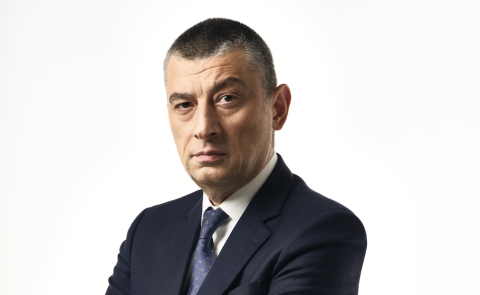
Giorgi Gakharia: The EU Should Engage Georgia Despite Its Democratic Backsliding
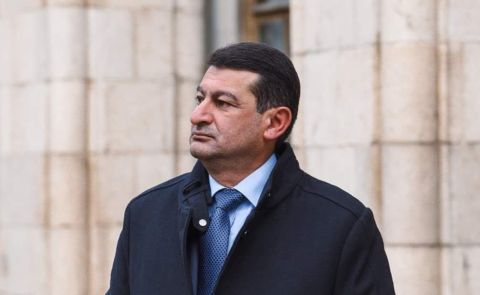
Peace or Capitulation? Shahverdyan on Armenia-Azerbaijan Agreement and the Nagorno-Karabakh Crisis
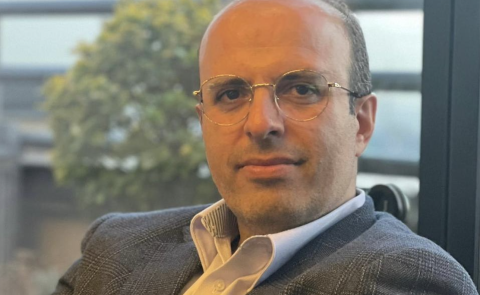
Ali Mousavi Khalkhali: Iran Will Avoid Conflict in the Caucasus
